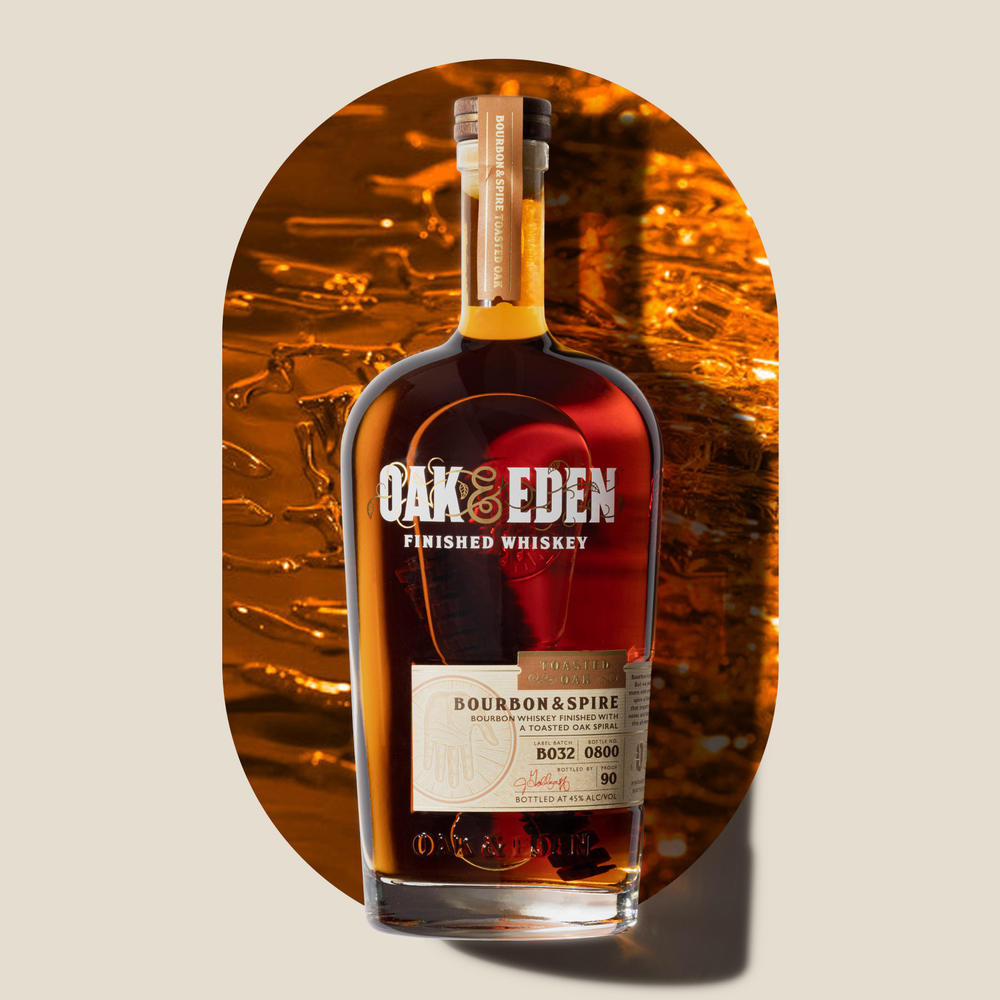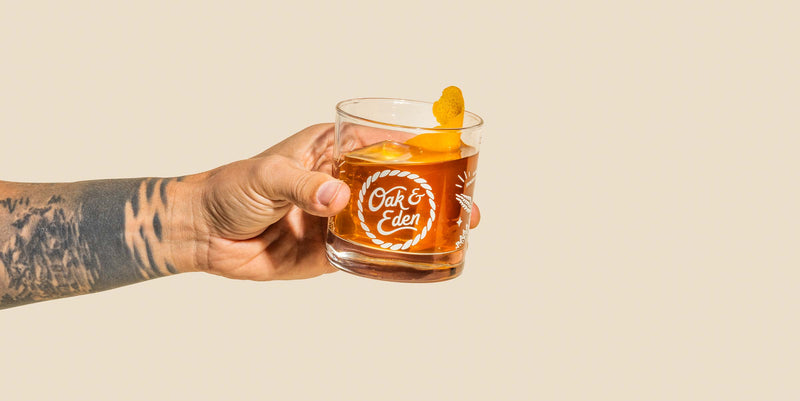How To Organize a Home Bar: The Ultimate Guide
Everyone likes a drink here and there, especially when having guests over for dinner or a game night. Whipping up delicious and inventive cocktails can take any night to a whole new level.
A home bar is a great way to entertain guests, have fun with friends, and make sure everyone always has their favorite drink on hand. But before you can start serving drinks, you must ensure your home bar is properly organized.
In this ultimate guide, we'll show you how to organize your home bar for maximum efficiency, style, and ease of use. We'll also cover the essential items every home bar needs, so you can be sure you have everything you need to get started.
So whether you're a seasoned professional or a total novice, read on for everything you need to know about organizing a home bar that will keep your guests and your taste buds happy.
Here is the Oak & Eden ultimate guide to organizing your home bar.
The Things Every Home Bar Needs
The first things to get squared away for your home bar are the essential items every home bar needs. A home bar needs several crucial items to be functional — but once you have these items, a whole world of possibilities opens up to you.
Bar Equipment
The first few things you need to have are your key bar equipment. Here is a list of the most important items:
- Cocktail Shaker: You need a cocktail shaker to make any sort of shaken drink, which is most cocktails. You can choose between a Boston shaker and a cobbler shaker; whatever you are most comfortable with is best. Just make sure your cocktail shaker has a good seal and is easy to open when you are done shaking.
- Citrus Press: In order to have fresh fruit juice, you will need a press to juice it.
- Knife and Cutting Board: A knife and cutting board are essential if you plan to use fresh fruits in your cocktails (which you should). Your knife should be sharp and easy to use.
- Jigger: A jigger is the special measuring device bartenders use to measure their pours for cocktails. Jiggers have two sides, one that is two ounces or one and a half ounces and one that is 1 ounce. They also have markings on the inside for smaller incremental measurements.
- Strainer: While not essential for every cocktail, a Hawthorne or fine mesh strainer can be useful for certain cocktails.
Mixers
You will need several important mixers — the non-alcoholic components of your cocktails.
-
Simple Syrup: Simple syrup is arguably the most important mixer for your bar. It’s a 1:1 combination of sugar and water that’s used to sweeten up cocktails as needed.
You can make it at home by combining a cup of sugar with a cup of water in a pot on your stove on medium heat. Stir to combine. Heat until the sugar is fully dissolved, and then take it off the heat and allow it to cool. Store it in a squeeze bottle. - Lemons and Limes: The most commonly used fruit juices in cocktails are lemons and limes, which add a sharp punch to any flavor combinations. It’s smart to always have a few fresh on hand for squeezing.
- Anything Else: There are thousands of cocktail recipes out there, so you may want to have other mixers in your bar. It might be club soda, cranberry juice, pineapple juice, or anything else. Your home bar can be personalized for you.
Liquors and Liqueurs
Last but certainly not least, you need a wide variety of liquors and liqueurs to make the drinks you like.
- Cardinal Liquors: The five most commonly used liquors in cocktails are: vodka, gin, rum, whiskey, and tequila. Mezcal is gaining popularity but is not essential. Use quality spirits that will elevate your cocktails rather than take away from them.
- Anything Else: Stocking your home bar with as many bottles as a professional bar is impractical, especially to start. Just get the bottles you need for your favorite drinks and slowly expand from there.
It may sound like a long list, but don't be frightened. It’s much more manageable than you might think.
How To Organize Your Home Bar
Now that you have assembled your necessary equipment, you are finally ready to organize your home bar to make it easy to use and pleasant to look at.
Deciding a Style
Home bars can come in all shapes and sizes. Some home bars are designed as 1600s wardrobe chests, and there are other minimalist-style carts with just enough room for a bottle or two.
Whatever style you choose should match and work seamlessly with the room it’s in. If your home bar is in your living room, it should match your living room. If it is in your home office, it can match the style of your office. Your bar should enhance the look of your space, not detract from it.
Practical Essentials
Every bar has to meet a few qualifications for usefulness. It needs enough space to hold at least your five most regularly used bottles. The rest can go in a cabinet or on a shelf near the bar, but your most essential bottles should be within reach.
You will also need enough workspace to mix and prepare your drinks. This means enough room to cut fresh fruits, mix your cocktails, and serve. If your bar doesn't offer this, consider getting an island to serve as a workspace next to your bar.
Ingredient Organization
You need to organize the ingredients at your bar. The most important part of any organization system you have is that it should make sense to you — there is no use following an organization system that doesn't fit you.
Set up your bottles so that it is easiest to reach the bottles and ingredients you use the most and the hardest to reach ingredients you use the least. In general, this will mean keeping your main liquor of choice right where it can be grabbed and featuring your shaker and jigger in a prominent place.
Everything should have a place it returns to, and when possible, keep clutter away from your space. Your bar is a food prep area and needs to remain clean and sanitary.
Final Tip: Beware the L-Shaped Home Bar
If you aren’t interested in a bar cart and instead want a fully functional home bar that is built into the room, you might need to put in a bit more work. These are nice, especially if you are a professional bartender yourself and can really utilize the space.
However, if you are a novice, and want your home bar to mainly serve entertaining purposes, then an L-shaped pro bar has a major drawback. They are designed to have one entrance and exit point, far away from the crowd to avoid people getting behind your bar.
When you are working in a real bar, this can give you some much-needed distance from your customer. When you are hosting a party, however, this can get in the way of interaction with your friends and guests.
How To Organize a Home Bar: Takeaways
Organizing your home bar doesn't have to be difficult, and with a little forethought, you can create a space that is both stylish and functional.
Remember first and foremost that you need the essential equipment. This includes everything from your shaker and jigger to your liquors. Every good bar needs a great whiskey, and if you are looking for a great option, consider our offerings at Oak & Eden. Our Inspired Series of whiskeys covers everything from rye to bourbon and beyond.
When setting up your bar, keep in mind the look you are going for and the practical essentials you need for prep and serving. Make sure that everything has a place and that your most essential ingredients are within easy reach.
If you can manage these few things, you are close to having a fully functional home bar to wow your guests with inventive cocktails and delicious mixes.
Sources:
6 Reasons Why Everyone Should Own a Cocktail Shaker | The Spruce Eats
Ergonomics and How to Organize Your Home Bar | Serious Eats
The key differences between liquor and liqueur, plus common types to know | Insider






